Inhibition of SIRT1 catalytic activity increases p53 acetylation but does not alter cell survival following DNA damage
- PMID: 16354677
- PMCID: PMC1317617
- DOI: 10.1128/MCB.26.1.28-38.2006
Inhibition of SIRT1 catalytic activity increases p53 acetylation but does not alter cell survival following DNA damage
Abstract
Human SIRT1 is an enzyme that deacetylates the p53 tumor suppressor protein and has been suggested to modulate p53-dependent functions including DNA damage-induced cell death. In this report, we used EX-527, a novel, potent, and specific small-molecule inhibitor of SIRT1 catalytic activity to examine the role of SIRT1 in p53 acetylation and cell survival after DNA damage. Treatment with EX-527 dramatically increased acetylation at lysine 382 of p53 after different types of DNA damage in primary human mammary epithelial cells and several cell lines. Significantly, inhibition of SIRT1 catalytic activity by EX-527 had no effect on cell growth, viability, or p53-controlled gene expression in cells treated with etoposide. Acetyl-p53 was also increased by the histone deacetylase (HDAC) class I/II inhibitor trichostatin A (TSA). EX-527 and TSA acted synergistically to increase acetyl-p53 levels, confirming that p53 acetylation is regulated by both SIRT1 and HDACs. While TSA alone reduced cell survival after DNA damage, the combination of EX-527 and TSA had no further effect on cell viability and growth. These results show that, although SIRT1 deacetylates p53, this does not play a role in cell survival following DNA damage in certain cell lines and primary human mammary epithelial cells.
Figures
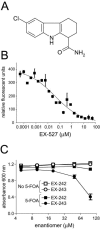
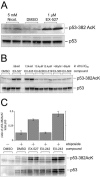

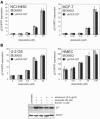
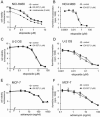

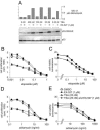

Similar articles
-
Measurement of the cellular deacetylase activity of SIRT1 on p53 via LanthaScreen® technology.Mol Biosyst. 2011 Jan;7(1):59-66. doi: 10.1039/c0mb00026d. Epub 2010 Oct 8. Mol Biosyst. 2011. PMID: 20931131
-
Silent information regulator 2alpha, a longevity factor and class III histone deacetylase, is an essential endogenous apoptosis inhibitor in cardiac myocytes.Circ Res. 2004 Nov 12;95(10):971-80. doi: 10.1161/01.RES.0000147557.75257.ff. Epub 2004 Oct 14. Circ Res. 2004. PMID: 15486319
-
Active regulator of SIRT1 cooperates with SIRT1 and facilitates suppression of p53 activity.Mol Cell. 2007 Oct 26;28(2):277-90. doi: 10.1016/j.molcel.2007.08.030. Mol Cell. 2007. PMID: 17964266
-
The critical role of the class III histone deacetylase SIRT1 in cancer.Cancer Res. 2009 Mar 1;69(5):1702-5. doi: 10.1158/0008-5472.CAN-08-3365. Epub 2009 Feb 24. Cancer Res. 2009. PMID: 19244112 Review.
-
Current advances in the synthesis and antitumoral activity of SIRT1-2 inhibitors by modulation of p53 and pro-apoptotic proteins.Curr Med Chem. 2012;19(34):5871-84. doi: 10.2174/092986712804143303. Curr Med Chem. 2012. PMID: 22998567 Review.
Cited by
-
Luteolin exerts an anticancer effect on NCI-H460 human non-small cell lung cancer cells through the induction of Sirt1-mediated apoptosis.Mol Med Rep. 2015 Sep;12(3):4196-4202. doi: 10.3892/mmr.2015.3956. Epub 2015 Jun 18. Mol Med Rep. 2015. PMID: 26096576 Free PMC article.
-
Bisindole-PBD regulates breast cancer cell proliferation via SIRT-p53 axis.Cancer Biol Ther. 2015;16(10):1486-501. doi: 10.1080/15384047.2015.1071731. Epub 2015 Jul 20. Cancer Biol Ther. 2015. PMID: 26192233 Free PMC article.
-
Ex-527 inhibits Sirtuins by exploiting their unique NAD+-dependent deacetylation mechanism.Proc Natl Acad Sci U S A. 2013 Jul 23;110(30):E2772-81. doi: 10.1073/pnas.1303628110. Epub 2013 Jul 9. Proc Natl Acad Sci U S A. 2013. PMID: 23840057 Free PMC article.
-
SIRT1 is involved in oncogenic signaling mediated by GPER in breast cancer.Cell Death Dis. 2015 Jul 30;6(7):e1834. doi: 10.1038/cddis.2015.201. Cell Death Dis. 2015. PMID: 26225773 Free PMC article.
-
MicroRNA‑34a induces apoptosis in PC12 cells by reducing B‑cell lymphoma 2 and sirtuin‑1 expression.Mol Med Rep. 2015 Oct;12(4):5709-14. doi: 10.3892/mmr.2015.4185. Epub 2015 Aug 5. Mol Med Rep. 2015. PMID: 26252661 Free PMC article.
References
-
- Appella, E., and C. W. Anderson. 2001. Post-translational modifications and activation of p53 by genotoxic stresses. Eur. J. Biochem. 268:2764-2772. - PubMed
-
- Barlev, N. A., L. Liu, N. H. Chehab, K. Mansfield, K. G. Harris, T. D. Halazonetis, and S. L. Berger. 2001. Acetylation of p53 activates transcription through recruitment of coactivators/histone acetyltransferases. Mol. Cell 8:1243-1254. - PubMed
-
- Bitterman, K. J., R. M. Anderson, H. Y. Cohen, M. Latorre-Esteves, and D. A. Sinclair. 2002. Inhibition of silencing and accelerated aging by nicotinamide, a putative negative regulator of yeast sir2 and human SIRT1. J. Biol. Chem. 277:45099-45107. - PubMed
-
- Blander, G., and L. Guarente. 2004. The Sir2 family of protein deacetylases. Annu. Rev. Biochem. 73:417-435. - PubMed
-
- Bordone, L., and L. Guarente. 2005. Calorie restriction, SIRT1 and metabolism: understanding longevity. Nat. Rev. Mol. Cell Biol. 6:298-305. - PubMed
MeSH terms
Substances
LinkOut - more resources
Full Text Sources
Other Literature Sources
Molecular Biology Databases
Research Materials
Miscellaneous
